The HS.1182 Hawker Siddeley/Bae Hawk (and derivatives) ![]()
First taking to the air in 1974, the HS.1182 Hawk has proved to be one of the most successful British aircraft of all time, remaining in production for over 46 years with more than a thousand built, including the single seat Hawk 200 fighter. It was selected in 1981 as the US Navy’s carrier landing trainer, using a modified carrier capable variant built by McDonnell Douglas (now Boeing), but is perhaps best known to the public as the mount of the famous RAF Red Arrows display team.
BAE Systems have continued to develop the Hawk design, with its most recent version, the Hawk 120 series, featuring an elongated nose, updated fuselage centre section and new wings,as well as other aerodynamic and avionics improvements. In this form it is sold as a Lead In Fighter trainer (LIFT) and Advanced Jet Trainer, with the RAF and RN now introducing the Mk.128 Hawk T.2 to replace older Hawk T.1s.
To ease transition to more capable jet aircraft, the current Hawk has an updated glass cockpit that emulates the look and feel of operational fighters. For the Indian Air Force and Navy, Mk.132 Hawks are built locally by Hindustan Aeronautics (HAL), whilst the Royal Saudi Air Force also builds the Mk.165 variant locally.
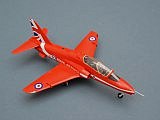
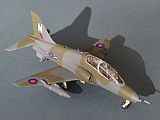
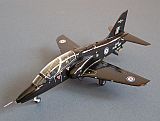
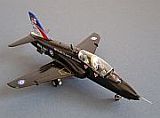

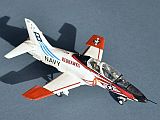
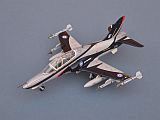
Airfix released this nice modern kit in about 2009. Although clearly related to their newer T.1 kit, it has a new fuselage and wings. Decals in this issue include this complex and difficult to apply demonstrator scheme; the current (2020) issue has equally attractive but much simpler Canadian, RAF and Australian markings. Link to build page
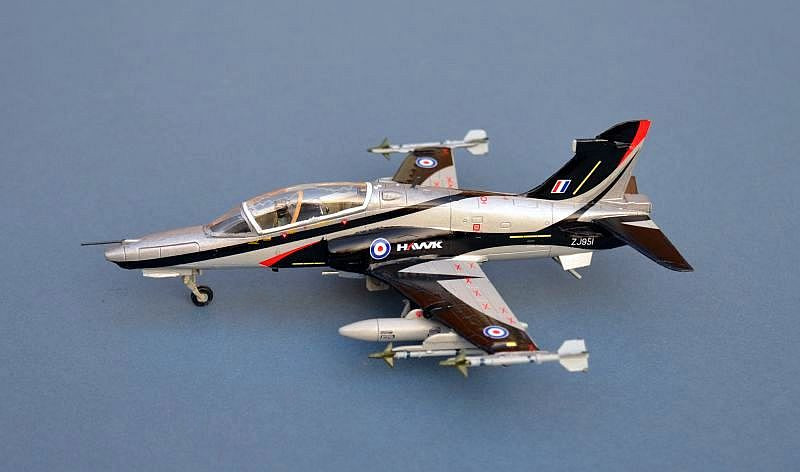
First taking to the air in 1974, the HS.1182 Hawk has proved to be one of the most successful British aircraft of all time, remaining in production for over 46 years with more than a thousand built, including the single seat Hawk 200 fighter. It was selected in 1981 as the US Navy’s carrier landing trainer, using a modified carrier capable variant built by McDonnell Douglas (now Boeing), but is perhaps best known to the public as the mount of the famous RAF Red Arrows display team.
BAE Systems have continued to develop the Hawk design, with its most recent version, the Hawk 120 series, featuring an elongated nose, updated fuselage centre section and new wings,as well as other aerodynamic and avionics improvements. In this form it is sold as a Lead In Fighter trainer (LIFT) and Advanced Jet Trainer, with the RAF and RN now introducing the Mk.128 Hawk T.2 to replace older Hawk T.1s.
To ease transition to more capable jet aircraft, the current Hawk has an updated glass cockpit that emulates the look and feel of operational fighters. For the Indian Air Force and Navy, Mk.132 Hawks are built locally by Hindustan Aeronautics (HAL), whilst the Royal Saudi Air Force also builds the Mk.165 variant locally.
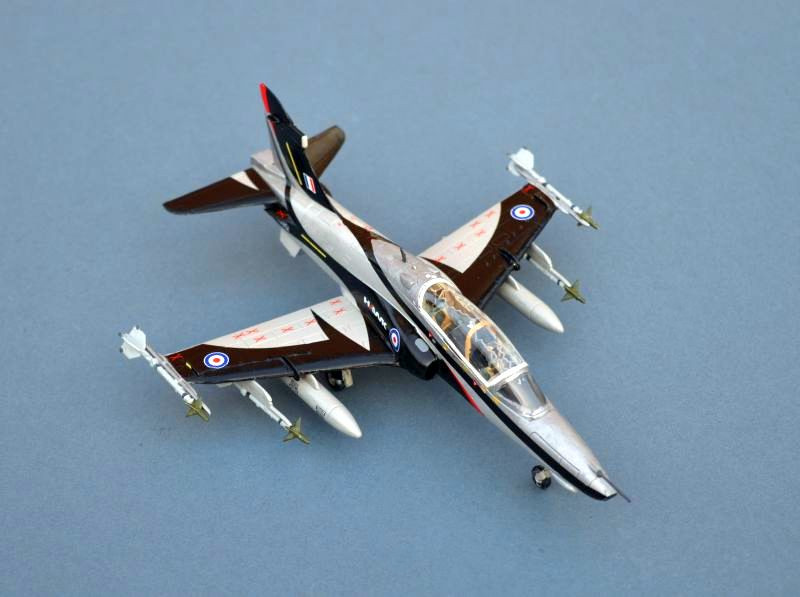
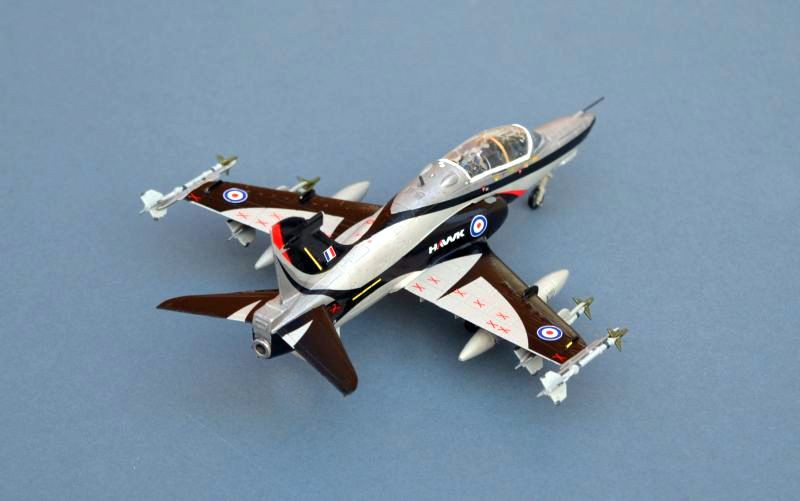

This is the Italeri T-
The Goshawk entered US Navy & US Marines service in the early 1990s as a replacement
for the T-


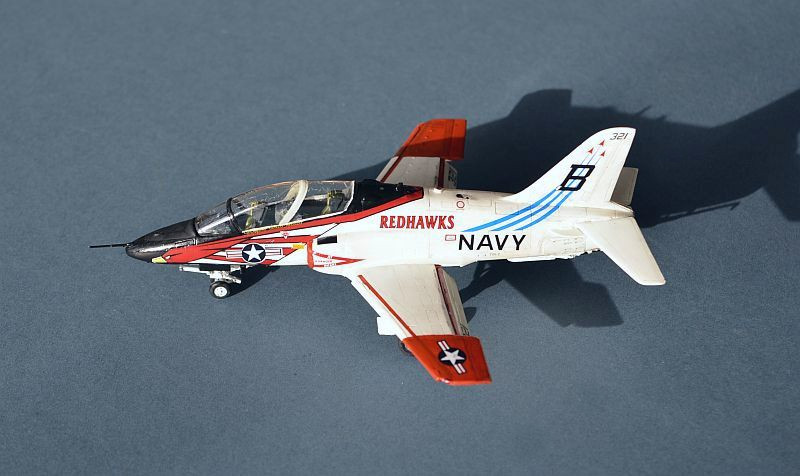
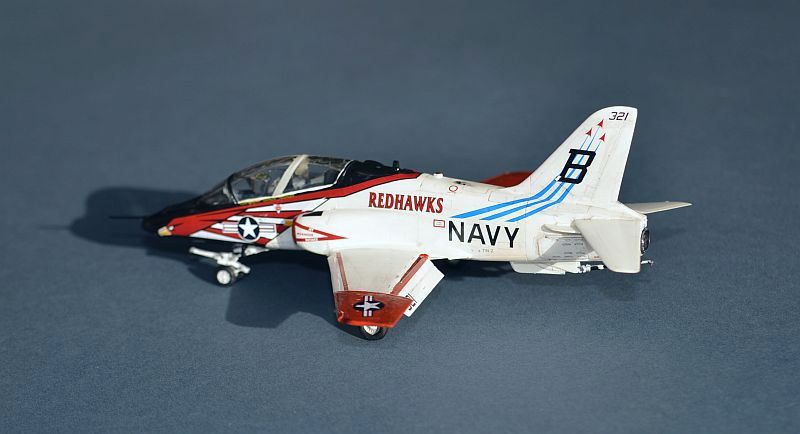
Matchbox's Hawk 200 is the only 1/72 kit of this variant available. I built this some years ago, so it is not quite to current kit build standards. Might update it some day to have the wing tip sidewinder stations of the production aircraft.
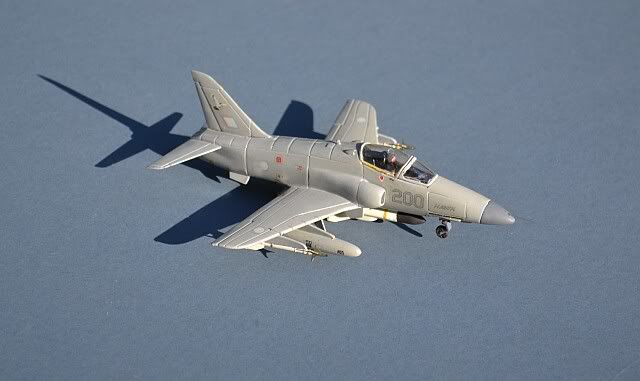
"The last all-
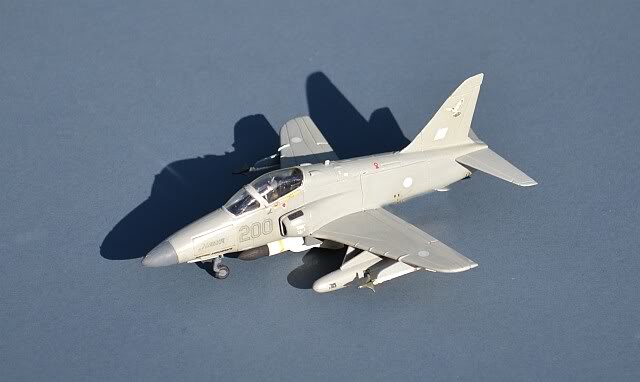
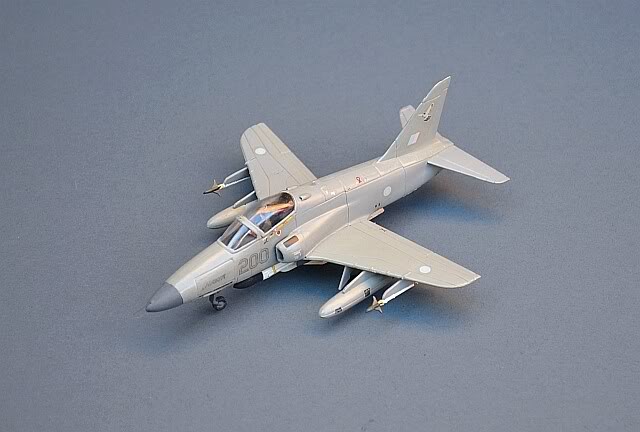
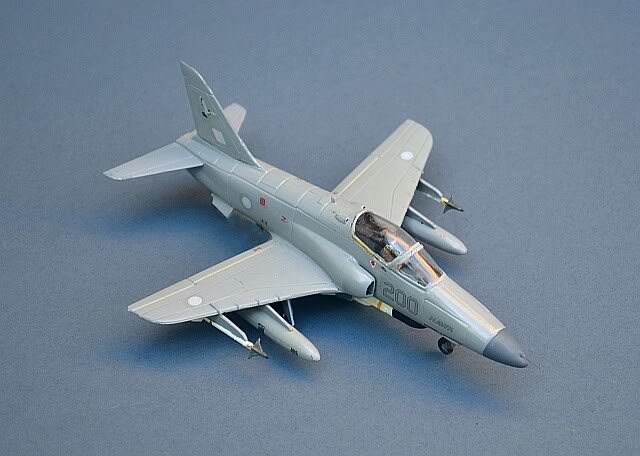
Airfix released this nicely formed modern kit in about 2015, replacing their existing Hawk kit, which wasn’t too bad. This is the gift set issue, which comes with cement, brush and some slightly unusable acrylic paint. The kit and its decals are very nice and an easy build. Painting the airframe and applying the decals need some skill though. Link to build page
First taking to the air in 1974, the HS.1182 Hawk has proved to be one of the most successful British aircraft of all time, remaining in production for over 44 years with more than a thousand built.
Although originally designed as a twin seat trainer, it has seen considerable export success in both double and single seat forms as a fighter and ground attack aircraft with over 18 foreign operators using the Hawk at some time. The US Navy also uses the carrier capable Goshawk variant, with tail hook and strengthened undercarriage for advanced carrier landing training of new USN and USMC pilots.
Operationally, both Malaysian and Zimbabwean Hawks have both seen air to ground combat
against insurgent forces. During the mid-
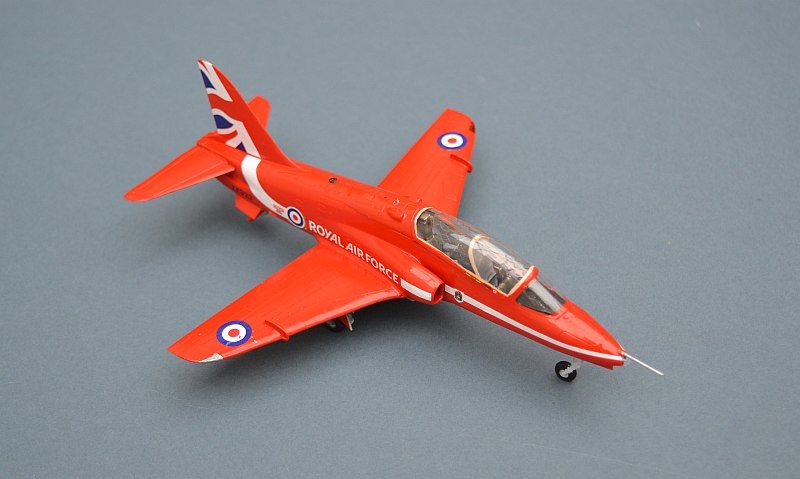
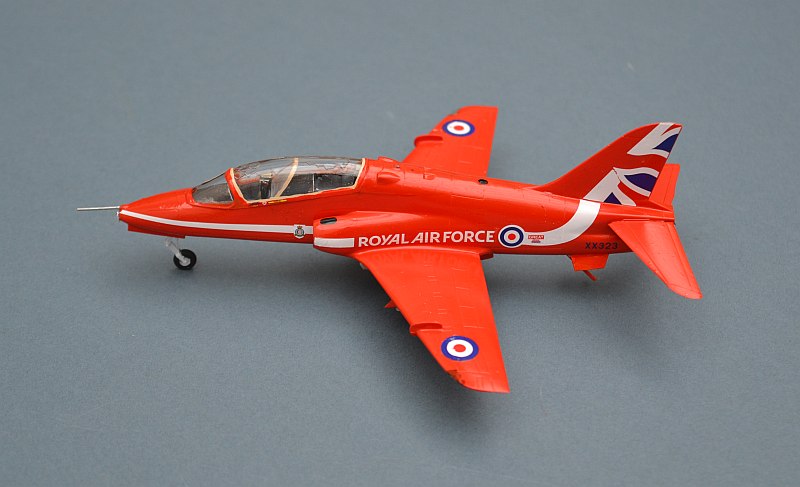
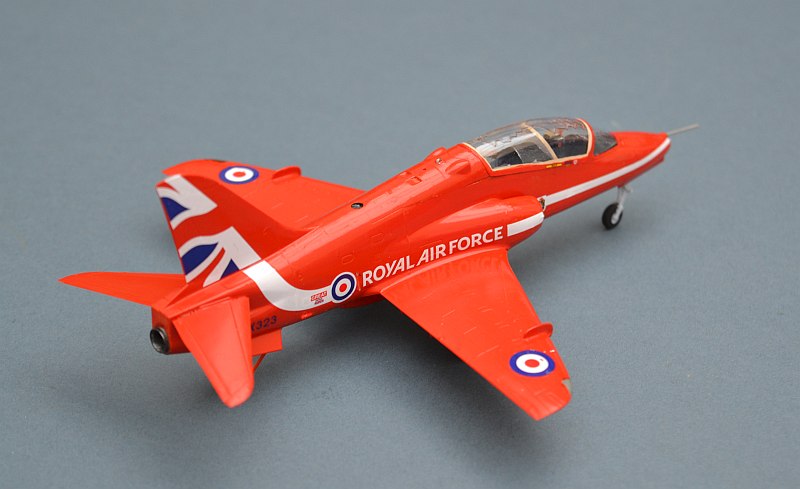
This is also the newer Airfix T.1 kit which is an easy build. Link to build page
In the 1980s and early 1990s, the RAF allocated a wartime air defence role to a number
of armed Hawk trainers. These would operate with Tornados, using their agility and
low observability for close in dogfighting, as well as point defence of key sites.
Aircraft operated in both wrap-
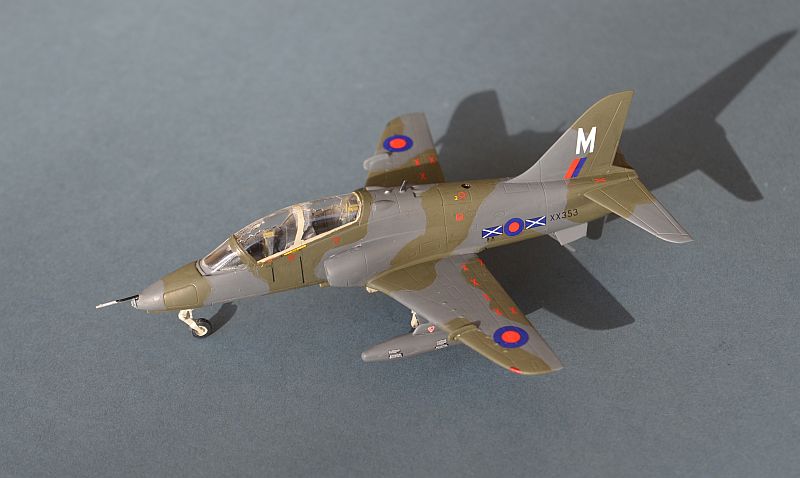
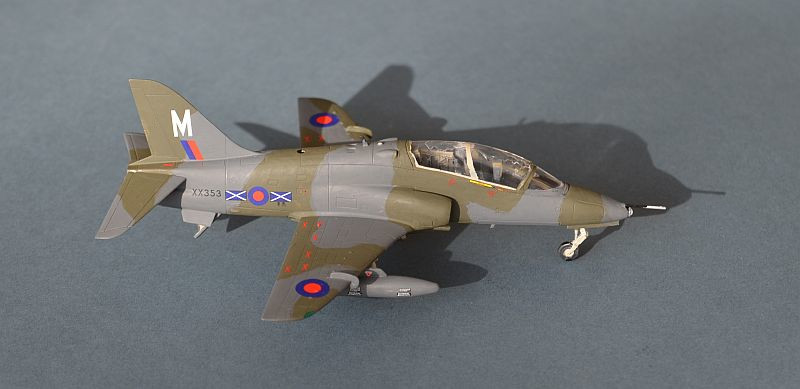
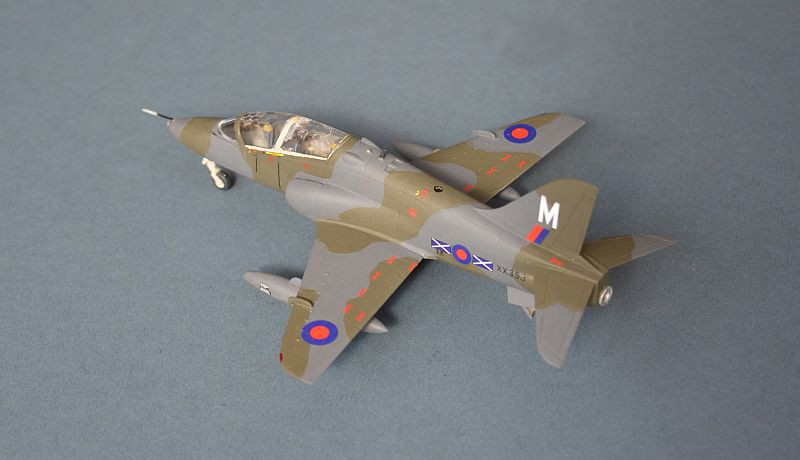
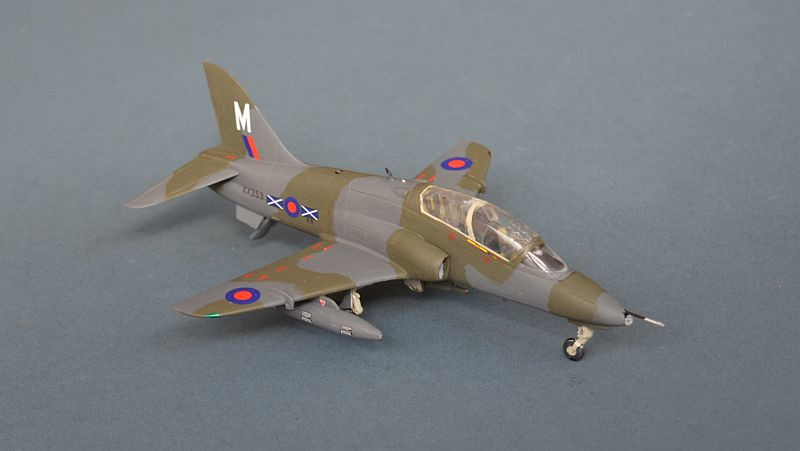
In 2009, several Royal Navy Hawk aircraft were painted in a special display scheme to commemorate 100 years of Naval Aviation.
This is the Italeri Hawk 100 with a fair amount of surgery to convert it back to a T.1. The marvellous Fly Navy 100 decals come from Alley Cat.
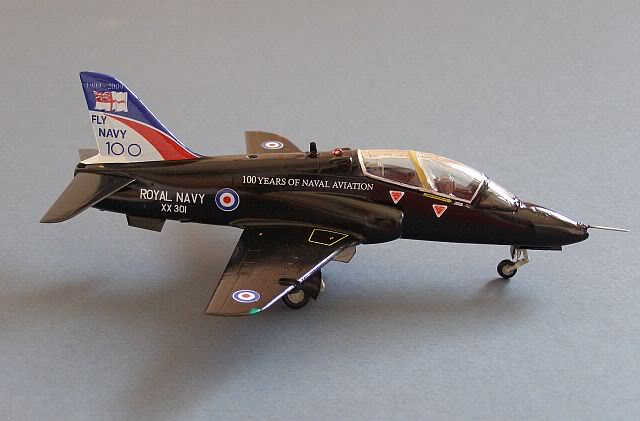
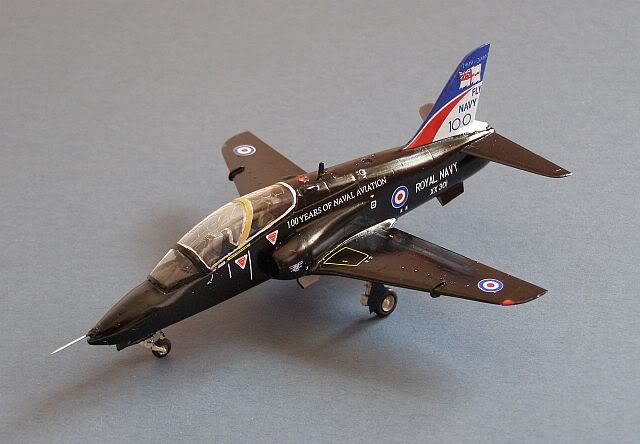
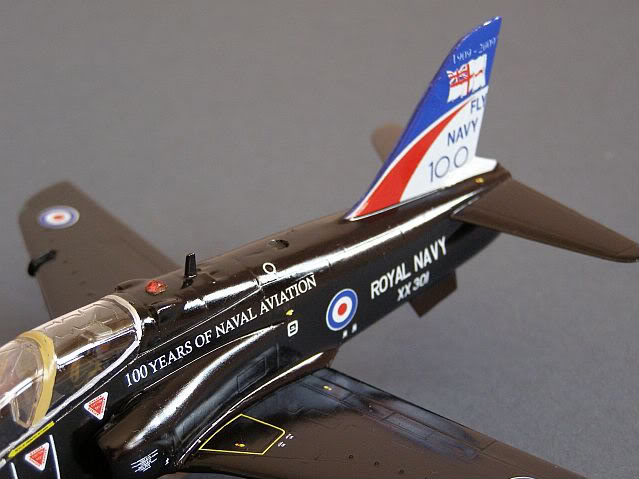
This is an Airfix Hawk I built back in the 1980s, now repainted as a RN aircraft, using Model Art's excellent decals. Always an elegant and balanced looking aircraft, the current gloss black scheme suits it well.
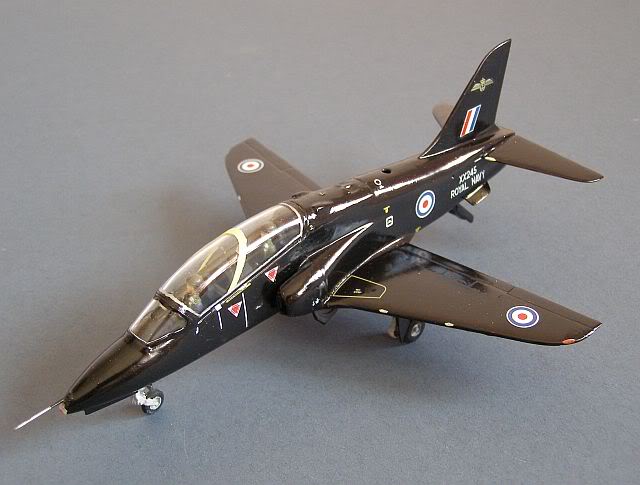 Main Index
Main Index
© www.gengriz.co.uk
